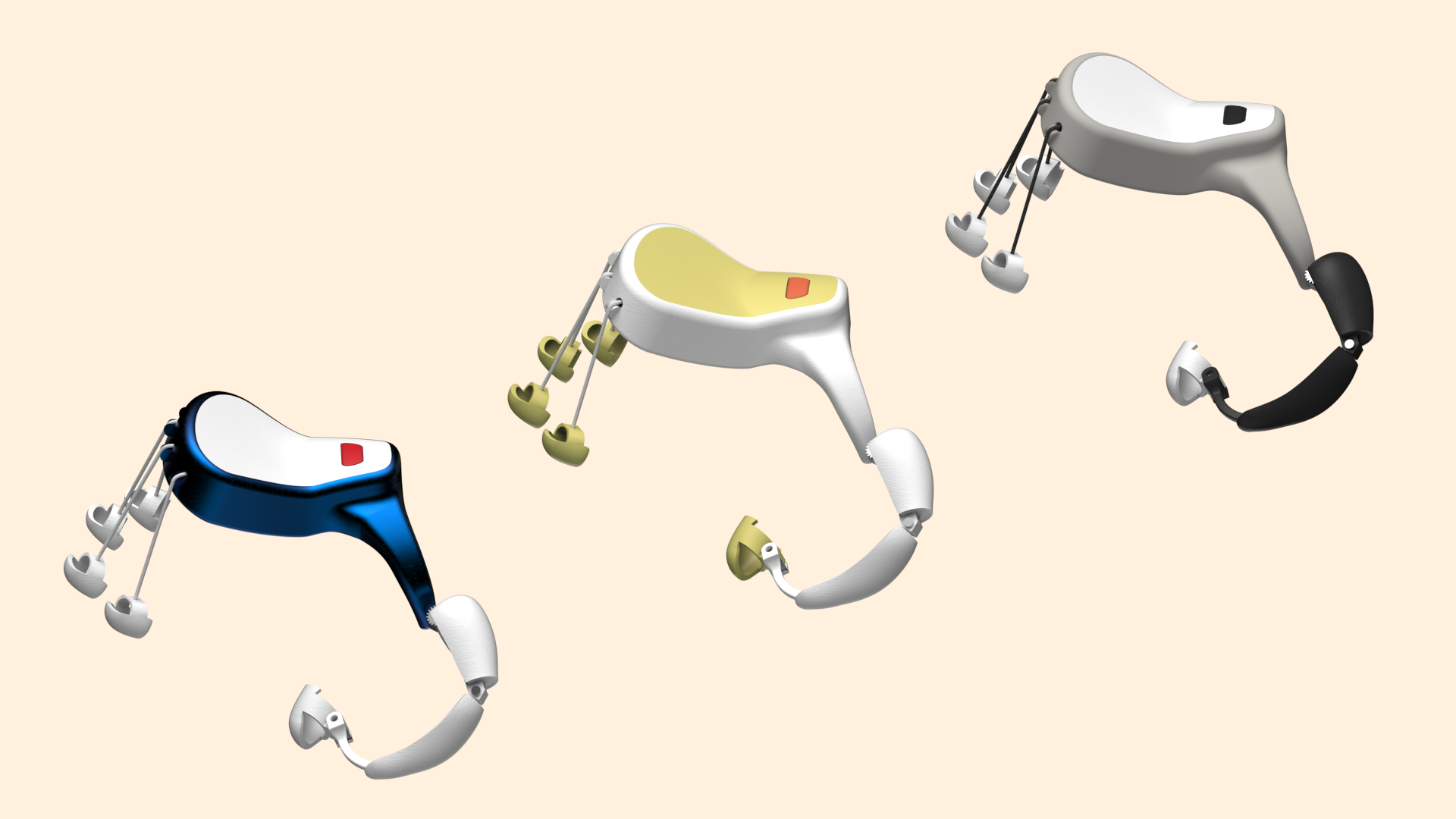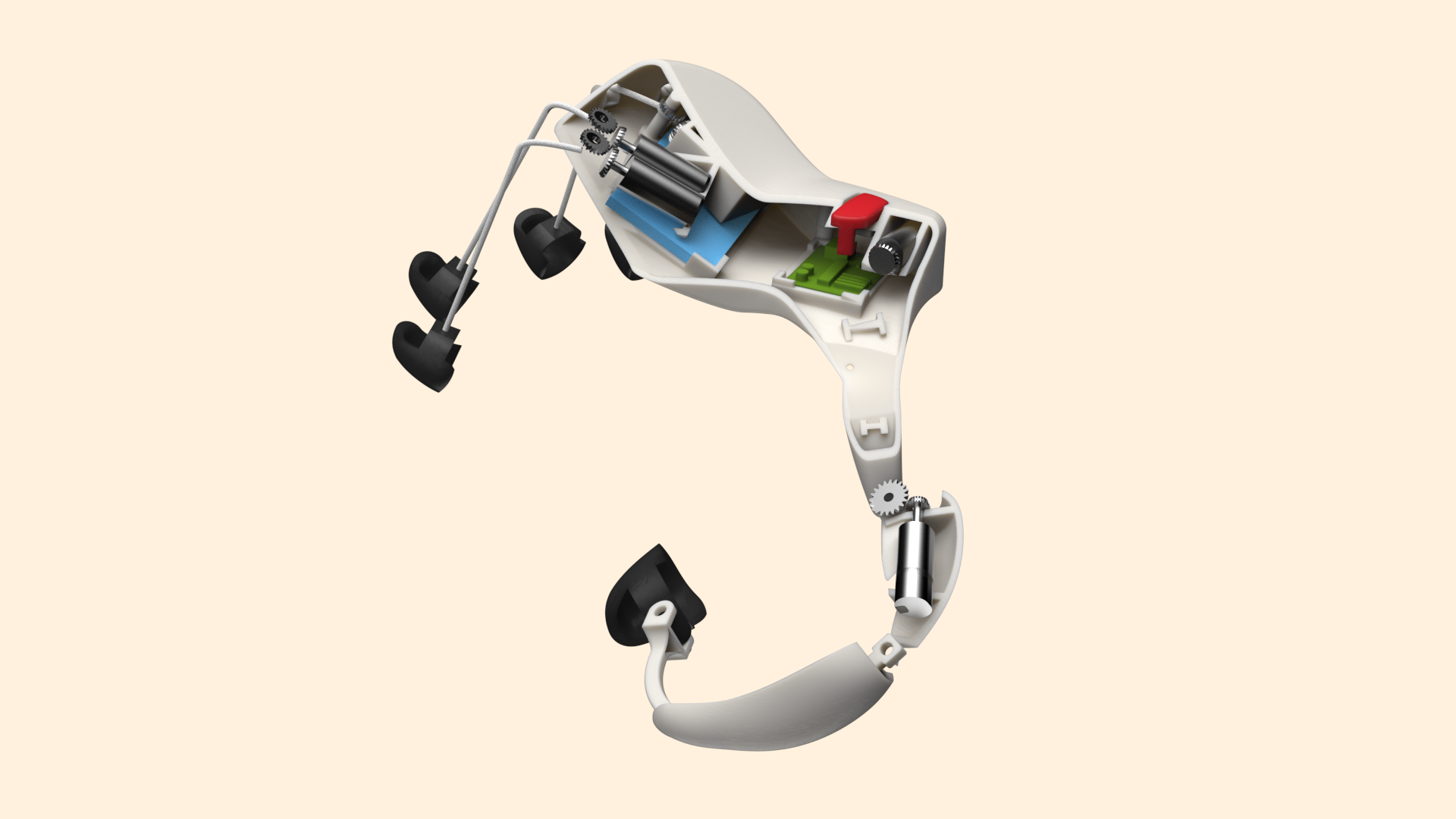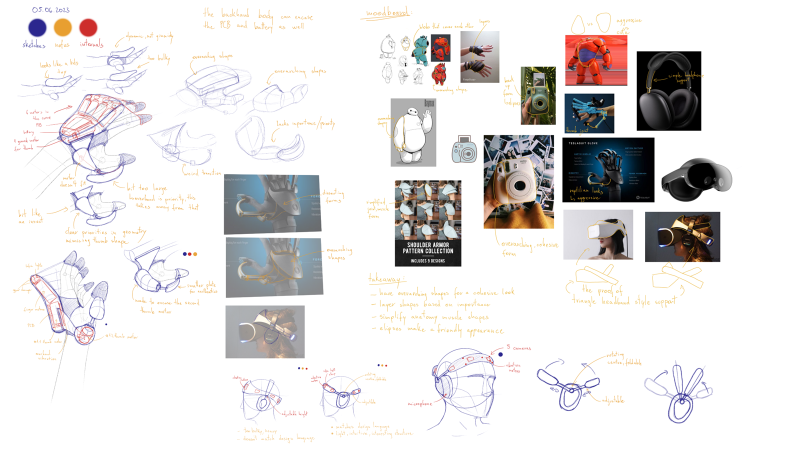
Using my engineering background, my goal is to revolutionise and transform the VR experience by creating intuitive and realistic interactions. By tailoring VR for specific professions or use cases, we unlock significant opportunities for optimizing its form and functionality.

AERINT VR
An innovative solution that makes use of haptic virtual reality technologies to introduce a new form-factor aimed at enabling visually impaired people to participate in interactive experiences in the virtual world.
Interaction
The haptic interface provides users with an authentic sensation of shapes and surface textures, granting the intuitiveness and clarity of their interactions. The user-friendly interface allow for clear navigation by either speech commands or gestures.
Pairing the controller with a VR headset and vibrating headband that provides realistic ambient sounds, narrations that communicates the virtual presence of obstacles by vibrating in that direction, enables a seamless navigation within a virtual open world.


Internal working
The hand controller operates by exerting opposing forces on the fingers to simulate the sensation of grasping an object. This opposing force is generated by a system comprising six motors that independently manipulate a cable for each of the four fingers while also controlling the complete range of motion for the thumb. Additionally, five micro-vibration motors situated at the fingertips are capable of reproducing virtual textures. The synergy between these two sensations delivers a comprehensive and authentic tactile experience with full range of motion.


Concept Ideation
After conducting my research, my objective was to craft an intuitive and user-friendly design that conveys a sense of natural warmth. Once the internal component specifications were established, the design was crafted to mimic the contours of the human hand in a simplified manner, aimed to establish a sense of familiarity and organic appeal.


Interaction prototype
Throughout the prototyping phase, numerous tests were conducted to ensure accurate sizing, functionality, and a complete range of motion. Following the validation of the design, a 3D model was created and produced using both resin and PLA printing techniques to guarantee high-quality results. Subsequently, the prototype underwent painting, assembly, and testing to achieve a realistic representation of the Aerint VR device.

Testing the working mechanism
To replicate the feel of the device a simplified imitation was made using servo motors and levers to adjust the cable length. The mechanism functions in a single degree of freedom instead of six to make the programming and sensor requirements lower. This means the mechanism can be moved up and down following a rail system, while a distance sensor picks up the relative location and assigns a rotation to the servo motors.
Other Work

VR hand controller
The hand controller has been crafted to enhance the intuitiveness of 3D design and artistic creation. It incorporates touch pads and an overhand housing, allowing the hand to remain unrestricted for real life object handling when necessary. This versatile controller offers a range of drawing options, including pinch gestures for a pen-like feel and palm contact to emulate the grip of a standard VR controller.

Enhanced laser tag gun
This gun has been designed to merge the excitement of first-person shooter games with the immersive experience of laser tag. It introduces various gun types, ammunition options, and even features like a mini-map and health bar, all seamlessly integrated into different screens on the gun, including the foldable side screen, the main display, and the aiming screen. The user interaction with the device resembles real-life firearms, with additional features incorporated to accommodate these gaming enhancements.
Visionary Thinkers
Visionary Creators
Visionary Makers